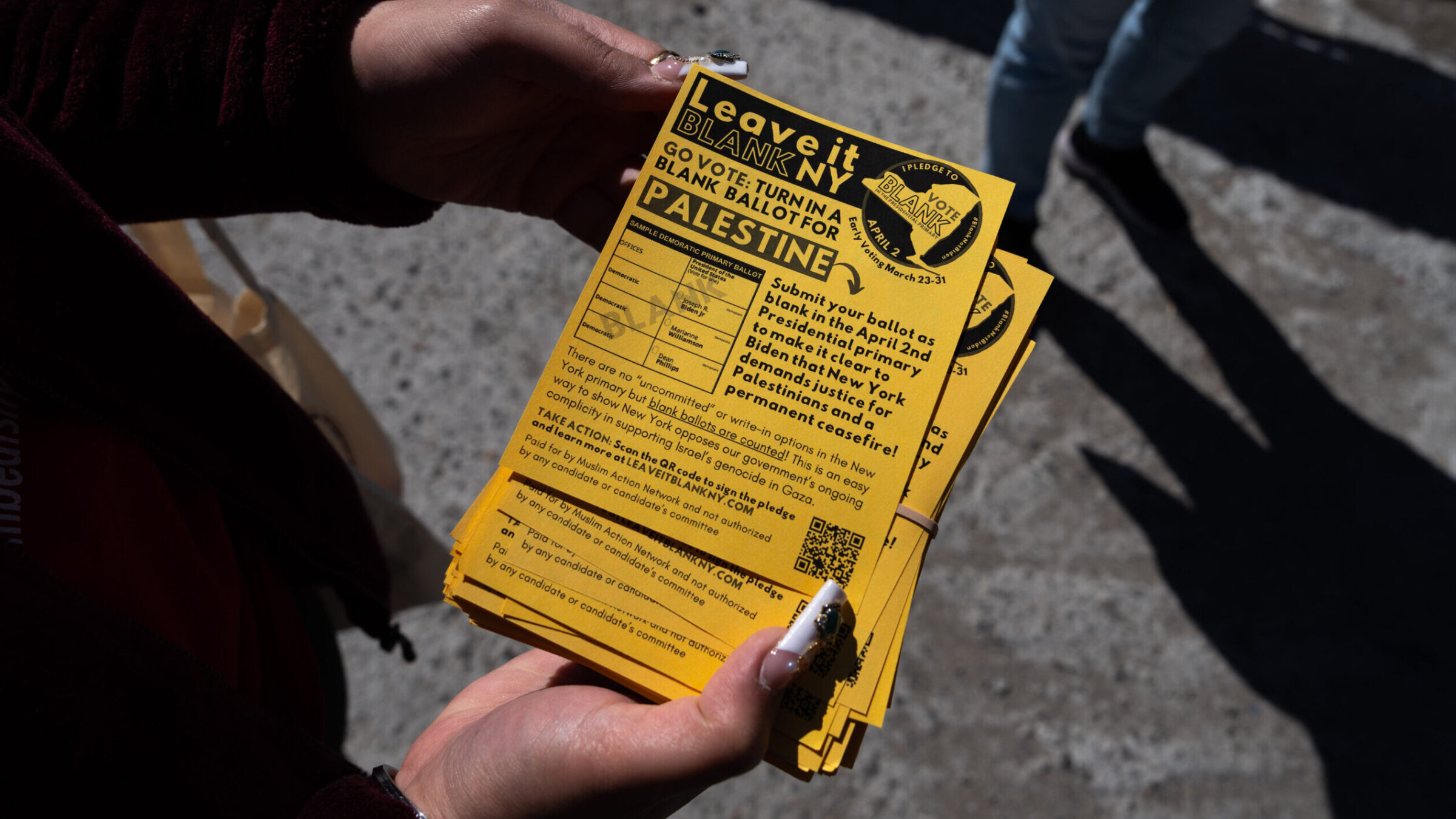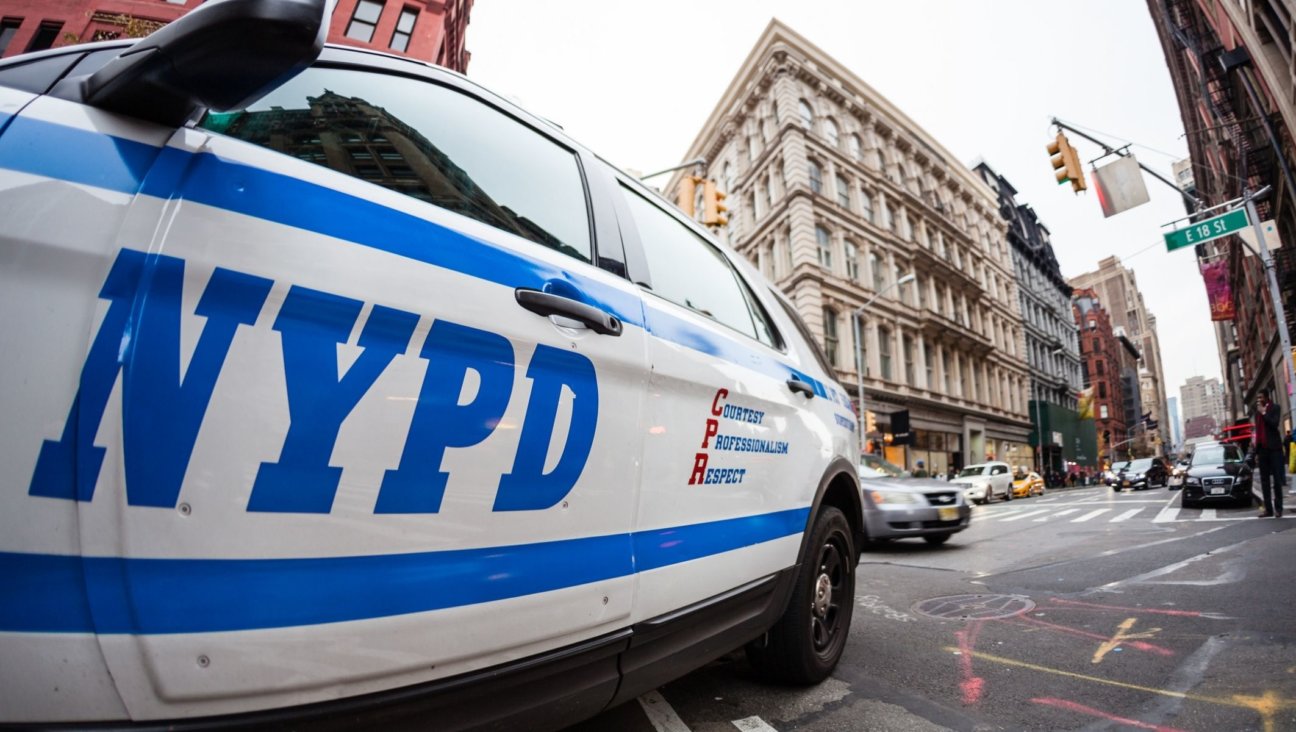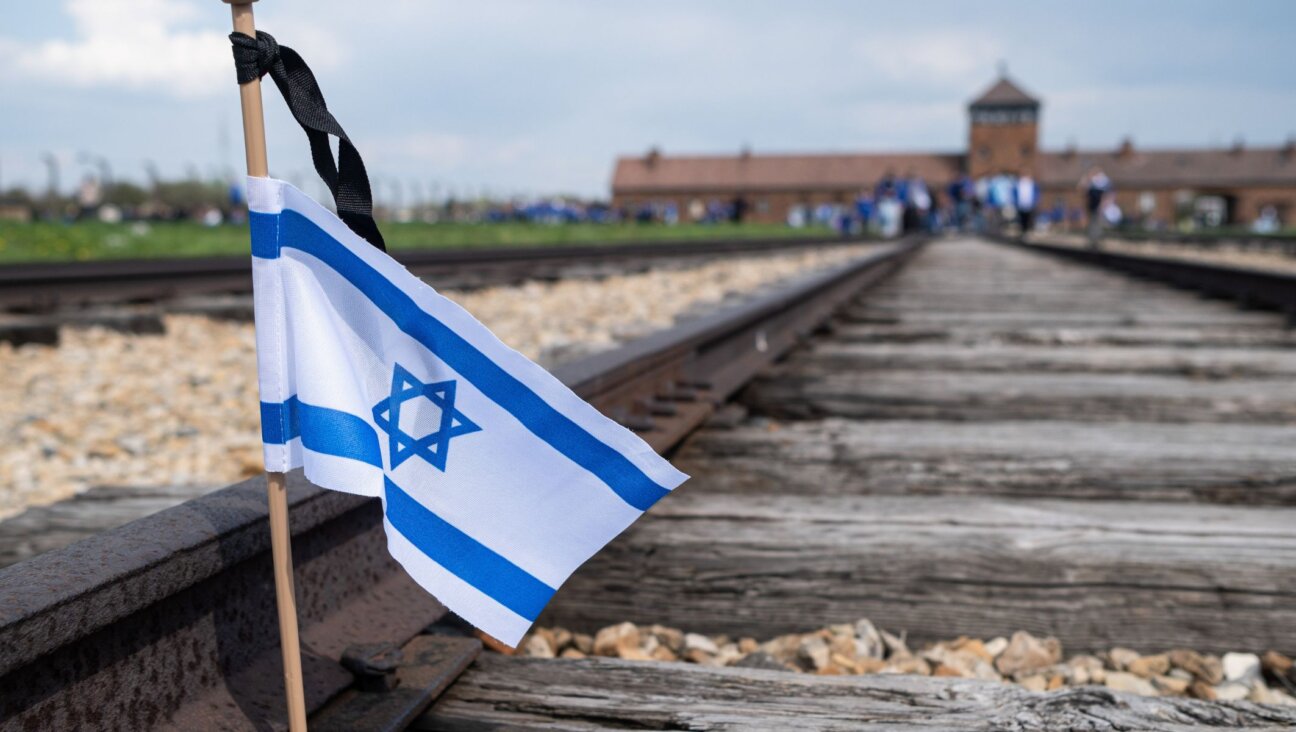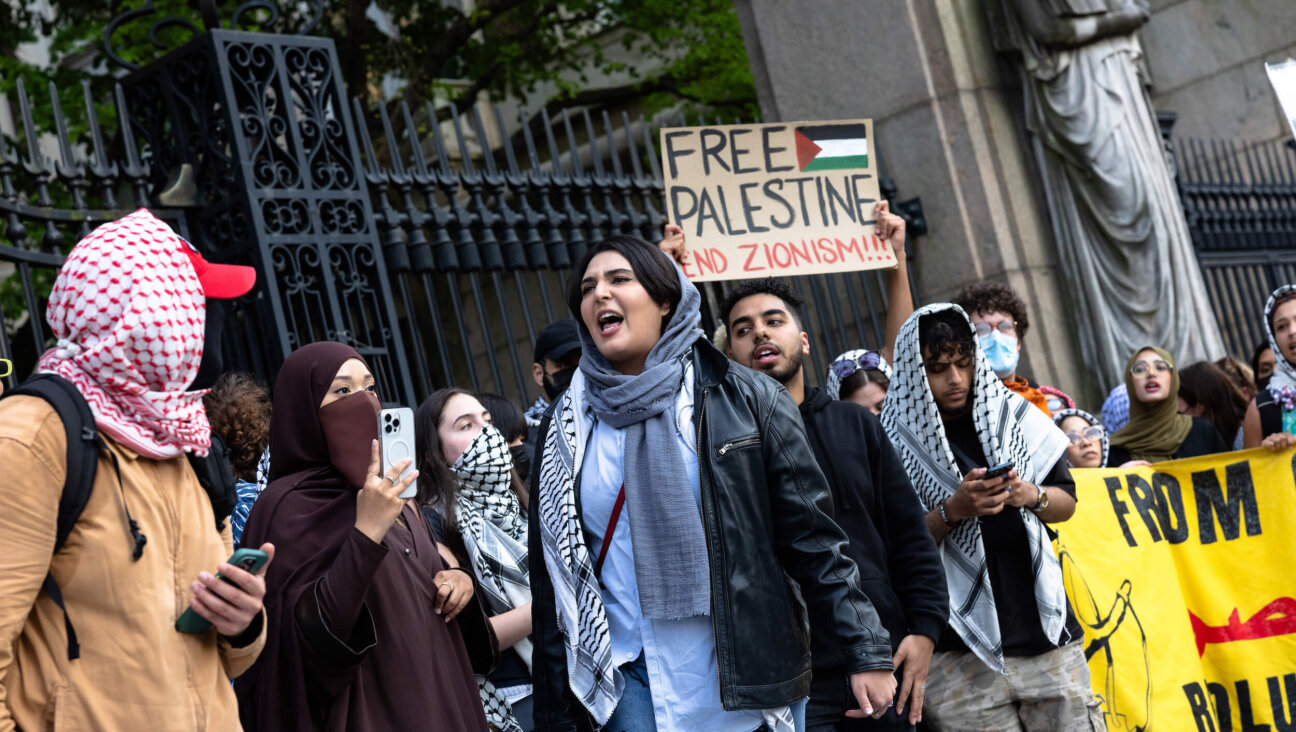Pro-Palestinian protest vote campaign claims success in NY primary, though exact numbers are unclear

A campaigner in Queens holds a Leave it Blank flyer ahead of New York’s presidential primary, March 29, 2024. (Adam Gray/Getty Images)
(New York Jewish Week) — Pro-Palestinian activists claimed success in their campaign calling for voters to submit blank ballots to protest President Joe Biden’s support for Israel in New York’s Democratic primary on Tuesday — though the actual number of protest votes is unclear.
Ahead of a series of Democratic primaries, activists across the country — particularly in swing states — have called on voters to choose “uncommitted” or an equivalent at the ballot box to register their opposition to Biden’s policy. They’ve aimed for the number of uncommitted votes to surpass Biden’s margin of victory in the 2020 election — a goal the campaign achieved in Wisconsin this week.
But in New York, the campaign faced a technical challenge because the ballot does not allow voters to choose “uncommitted.” Instead, activists launched an effort urging voters to submit blank ballots in protest.
According to one analysis by City & State, a publication focused on local politics, Tuesday’s Democratic primary saw some 39,000 blank ballots, around 12% of the total.
Turnout was low because the primary is already decided, and organizers have no hope of threatening a Biden loss in New York, which is expected to vote Democratic by a large margin. But the Leave It Blank campaign called the numbers “an unprecedented and historic result.”
A number of pro-Palestinian groups, including the anti-Zionist Jewish Voice for Peace, the left-wing Jews for Racial and Economic Justice, the progressive Working Families Party and New York City’s chapter of Democratic Socialists of America, all backed the Leave It Blank campaign.
But while many of the blank ballots were likely protest votes, calculating the exact number is more difficult in New York than in Wisconsin, Michigan or elsewhere. That’s because the New York Board of Elections did not include a tally of blank ballots in its preliminary results, which will take a couple weeks.
City & State calculated them by comparing votes for candidates to total ballots for delegates to the Democratic National Convention. The discrepancy between the two figures yielded the 39,000 estimate.
In addition, the count likely includes ballots that were deliberately left blank along with those deemed “void” because voters filled out their ballot incorrectly in some way.
Comparisons with previous elections are also difficult to gauge. In 2020, blank votes made up around 8% of all ballots in the Democratic party’s presidential primary.
But the ballots that year included other races for Congress and the state legislature, so some voters may have voted for other races and left the ballot blank for the presidential primary. In both 2020 and 2024, Biden was already the party’s presumptive presidential nominee.
With all of that taken into account, some areas had particularly high shares of blank or void ballots. According to City & State’s data, in New York City, the highest proportion of blank or void votes were cast in Brooklyn, amounting to nearly 25% of all ballots. The average for New York City was 15%.
The statewide figure of 12% is roughly in line with the protest vote in other states that are easier to measure.
In Wisconsin on Tuesday, 8.4% of primary voters cast “uninstructed” ballots, the equivalent of the “uncommitted” votes in other states. In Connecticut, another deep blue state, more than 7,400 Democratic voters, or 11.5% of the total, voted uncommitted. Nearly 15% of Rhode Island Democratic voters, more than 3,700 people, likewise submitted uncommitted votes.
The campaign began, and made its biggest mark, in Michigan in February, where more than 100,000 Democratic voters cast uncommitted ballots, representing 10% of voters.
This article originally appeared on JTA.org.

I hope you appreciated this article. Before you go, I’d like to ask you to please support the Forward’s award-winning, nonprofit journalism during this critical time.
Now more than ever, American Jews need independent news they can trust, with reporting driven by truth, not ideology. We serve you, not any ideological agenda.
At a time when other newsrooms are closing or cutting back, the Forward has removed its paywall and invested additional resources to report on the ground from Israel and around the U.S. on the impact of the war, rising antisemitism and the protests on college campuses.
Readers like you make it all possible. Support our work by becoming a Forward Member and connect with our journalism and your community.
Make a gift of any size and become a Forward member today. You’ll support our mission to tell the American Jewish story fully and fairly.
— Rachel Fishman Feddersen, Publisher and CEO
Join our mission to tell the Jewish story fully and fairly.






















